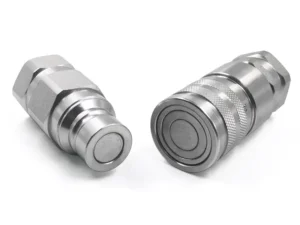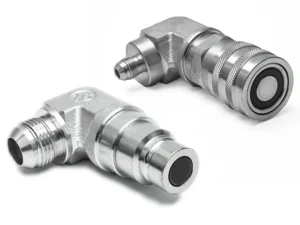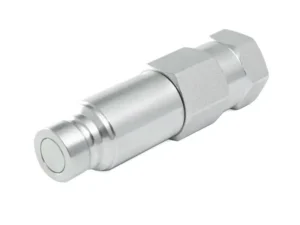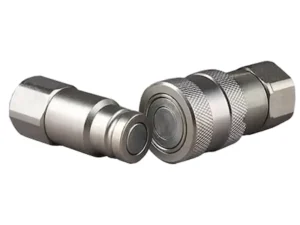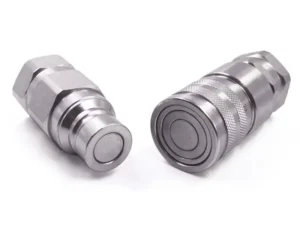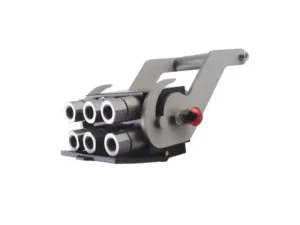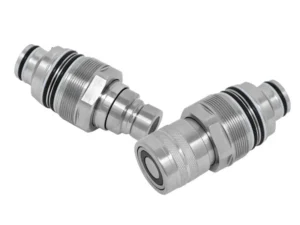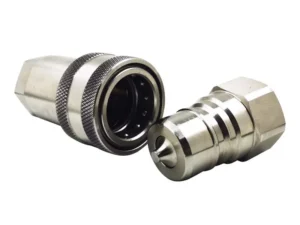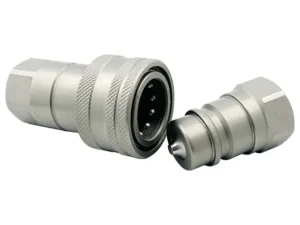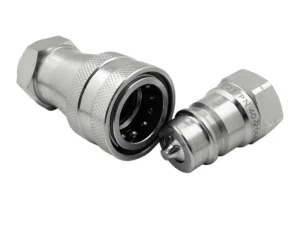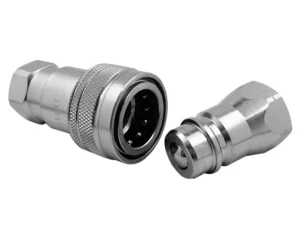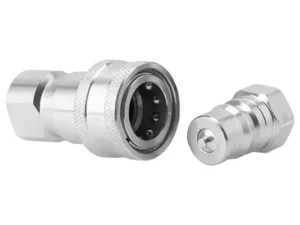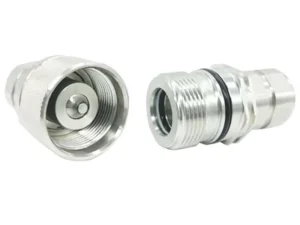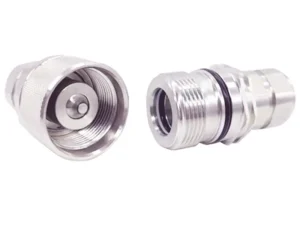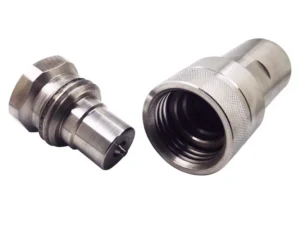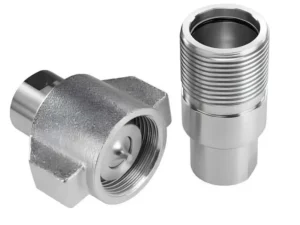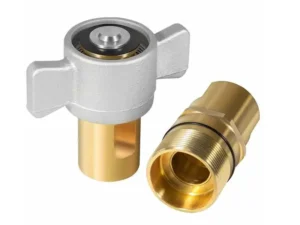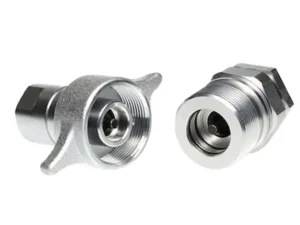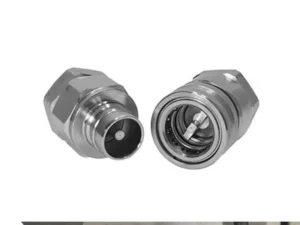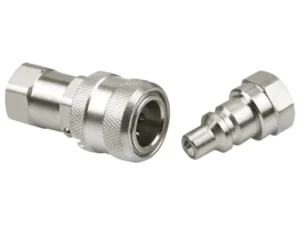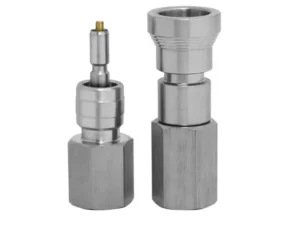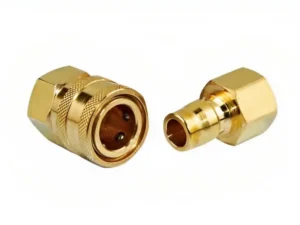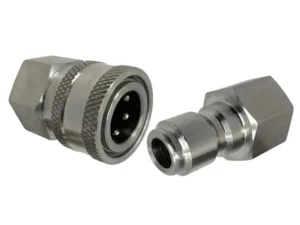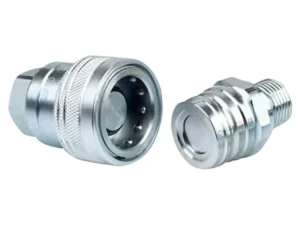How to choose material
Hydraulic Quick Coupling Body Materials
Hydraulic quick couplings are devices that simplify the connection and disconnection of fluid lines in hydraulic systems. They provide a fast, leak-free, and efficient way to attach or detach tools, implements, or hoses, enhancing the versatility and productivity of equipment.
Hydraulic Quick Coupling Body Materials
The choice of body material for hydraulic quick couplings hinges on several factors, including the application, pressure and temperature requirements, cost, and desired properties. Here’s a breakdown of the commonly used materials and their characteristics:
Steel
Carbon steel, Carbon steel is a type of steel alloy that primarily consists of iron and carbon, with carbon content typically ranging from 0.05% to 2.1% by weight. This small amount of carbon has a significant impact on the properties of the steel compared to pure iron.
- Strong and durable: Carbon steel offers good strength and durability, making it suitable for various structural and construction applications.
- Formability and weldability: It’s generally easier to form and weld compared to other types of steel, contributing to its widespread use.
- Moderate cost: Carbon steel is relatively affordable compared to other steel alloys, making it a cost-effective choice for many applications.
- Susceptible to corrosion: However, one major drawback is its susceptibility to rust and corrosion due to the presence of iron. Regular maintenance and protective coatings are often necessary to prevent corrosion.
- Mechanical properties: The specific mechanical properties like tensile strength, hardness, and ductility vary depending on the carbon content and processing methods. Higher carbon content generally leads to increased strength and hardness, but at the expense of ductility and weldability.
Because of these characteristics, most quick connectors in high-pressure hydraulic systems are made of carbon steel. The main ISO international standards are mainly based on carbon steel materials. For example, in addition to the size requirements for quick connectors in ISO 7241, other requirements are all based on carbon steel material requirements.
Brass
Brass is a versatile and commonly used metal alloy primarily composed of copper and zinc. Its specific properties and characteristics depend on the ratio of these two elements, typically ranging from 55% to 95% copper and 5% to 45% zinc.
- Strong and durable: While not as strong as steel, brass offers good strength and durability for various applications.
- Malleable and ductile: Easy to shape and bend, making it ideal for intricate designs and complex manufacturing processes.
- Resistant to corrosion: More resistant to corrosion than pure copper, especially in freshwater environments. However, it can still corrode in harsh environments or saltwater.
The corrosion resistance of brass makes brass quick connectors mainly used for fresh water transportation, steam and other applications.
Stainless Steel
Stainless steel is a family of iron-chromium alloys renowned for their outstanding resistance to corrosion, making them a widely used material across various industries.
- Corrosion resistance: The defining characteristic of stainless steel. Chromium forms a passive oxide layer on the surface that protects the underlying metal from rust and corrosion, even in harsh environments.
- Strength and durability: Different grades offer varying levels of strength depending on the alloy composition and processing. Some stainless steels can be even stronger than mild steel.
- Heat resistance: Certain grades exhibit excellent heat resistance, making them suitable for high-temperature applications like cookware or boilers.
- Ease of cleaning and maintenance: Smooth surface and corrosion resistance make stainless steel easy to clean and maintain, offering hygienic properties ideal for food and medical applications.
Stainless steel materials have better corrosion resistance, much better than brass materials, so they are used in many chemical fluids, and even 316L can be used for peroxides.
Aluminum
Lightweight, good corrosion resistance, good thermal conductivity, affordable
Aluminum quick connectors are not common, but many customers choose this material when ordering quick connectors.
Plastic
Nylon, polyvinylidene fluoride (PVDF), polytetrafluoroethylene (PTFE)
Lightweight, excellent corrosion resistance, good chemical resistance, suitable for food and beverage applications. Lower strength than metal, limited temperature range, not suitable for high pressures
Choosing the right material depends on factors
- Pressure Rating: Higher pressure systems require stronger materials like steel.
- Temperature Range: Materials like PTFE can handle extreme temperatures, while plastics may have limitations.
- Fluid Compatibility: Some materials react with specific fluids, so compatibility is crucial.
- Application: Factors like food contact, weight constraints, and cost can influence the choice.
- Cost: Steel is generally affordable, while exotic materials like titanium are expensive.
When selecting hydraulic quick couplings, consider not just the body material but also the seal material for optimal performance and compatibility with your specific needs.
